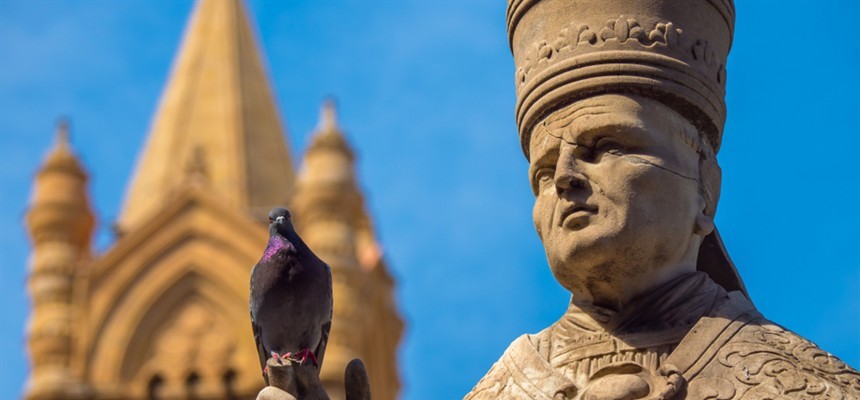
Sergius was a young Roman, the son of Benedictus. And he had a taste for adventure. Ordained a subdeacon by Pope Marinus I (882-884) and a deacon by Pope Stephen V (885-891) he was consecrated bishop of Caere in 893 by the much-maligned Pope Formosus. He appeared to support Lambert of Spoleto, while Formosus supported Arnulf of Carpathia as Holy Roman Emperor. One story has it that Formosus consecrated Sergius the bishop of Caere so that he could not become the bishop of Rome. At that time, once a bishop of a particular place, always a bishop of that place. There was no transferring back then.
Less than three years later, Formosus died. Pope Boniface lasted two weeks, then, suddenly, Pope Stephen VI was the new man on the throne by May of 896. Stephen was the pope who conducted the Cadaver Synod, pulling the cadaver of Pope Formosus out of the grave to conduct a trial. Sergius was involved in this trial/synod as a supporter of Pope Stephen VI. Stephen was deposed soon afterward. Not by coincidence, it would seem, an earthquake rocked Rome later that year, virtually destroying the Lateran Church.
The next pope, Romanus, reversed some of the declarations of the synod, but died in a year and a half, opening the Church up for a new election. There were two vying for the prize, this time, Sergius and John. Apparently, the electorate was evenly divided. The split decision was decided by Lambert of Spoleto, the emperor. John became Pope John IX and Sergius was excommunicated. He waited through two more popes before getting noticed again.
Theophlact, a rich nobleman of Rome, was magister militant, at the time. He had control of the local militia. Not liking the instability of the papacy, probably, Theophlact took Sergius under his wing. Once Christopher, the antipope, took the throne, Theophlact lead the ouster and imprisoned Christopher for a short period before throwing him into prison. Sergius was placed on the throne.
The first activity of the new pope was to travel to France and befriend King Lotharius. Lotharius was still stinging from the actions of Formosus, ten years previous, moving papal favor from the Franks to the Lombards. Instigated by the king, Sergius returned to Rome with a plan.
He abolished almost all that Formosus had done, again! This required the re-ordination of all men ordained by Formosus and any bishops consecrated by Formosus. The corpse of the dearly departed and abused pope was once again dug up and, this time, beheaded. The head was thrown into the turbulent Tiber. It is said that the head was rescued from the water and brought to St. Peter’s where a funeral was held. This may just be a story.
Sergius’s one claim to fame seems to be an argument between the Byzantine emperor, who wanted to marry a fourth time, and Patriarch Nicholas of Constantinople, who would not allow it. Sergius stepped in, ruled in favor of the emperor, leading to the deposing of Nicholas. Sergius’ participation in removing the patriarch from his position is one of the reasons behind the ultimate schism two centuries later.


Recent Comments